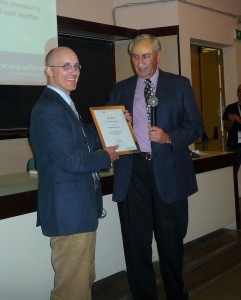US researchers have created a series of smart materials that twist and coil in response to light. These soft materials could be used in the muscle systems of future robots.
The field of robotics is looking to move beyond the clanking, jerky monstrosities of bad Hollywood movies. Most robotic systems are still hard, composed of metal structures with joints based on conventional bearings. Wheels and treads are often used, unnatural elements that cannot reproduce natural motions. A further limitation is they require large on-board energy sources to power motion, which increases weight and limits portability.
Now, a team including Timothy White and Matthew Smith at the US Air Force Research Laboratory in Ohio, have fabricated a series of cantilevers made from azobenzene liquid crystal polymer networks that can twist and coil, powered only by a change in the polarity and intensity of an external light source. The direction of the resulting torsional movement is partly controlled by the order within the material.
Smith, now an assistant professor at Hope College in Michigan says that while stimuli-responsive materials have exhibited planar and twisting motions before, the aim of the study was to ‘expand the suite of motions available’. The out-of-plane motions developed in this work are essential to ‘drive the field forward’ and better copy the more dexterous movements of living creatures.
Gursel Alici, a robotics expert at the University of Wollongong in Australia says this work ‘makes a significant contribution towards the realisation of biologically inspired robotic systems’. However, he believes ‘there are some immediate questions, which should be addressed before seeing application of this and other similar smart materials in novel device concepts.’ These questions include how to scale up the cantilevered structures to provide mechanical outputs as good as those of skeletal muscles.
Smith agrees that application of these materials in practical robots is far off, but this is only one of many interesting applications for their work. He admits that the main ‘limitation of these materials, right now, is [that] they are confined to small scales’ and thin films.
Future work will aim to produce materials that are capable of more complex motions and that are more mechanically robust for larger scale applications.
Torsional mechanical responses in azobenzene functionalized liquid crystalline polymer networks
Jeong Jae Wie, Kyung Min Lee, Matthew L. Smith, Richard A. Vaia and Timothy J. White
Soft Matter, 2013, Advance Article DOI: 10.1039/C3SM51574E
This feature was written by Jason Woolford and was originally published online in Chemistry World.
To keep up-to-date with all the latest research, sign-up to our RSS feed or Table of contents alert.
















